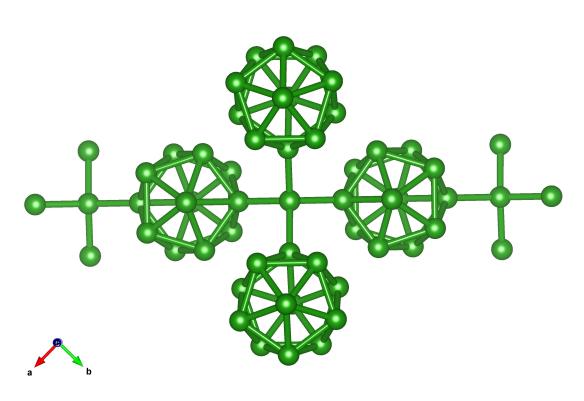Boron – an element to watch for the future
What does it look like?

The arrangement of 12-atom boron clusters in the alpha-tetragonal boron structure. Image generated by the VESTA (Visualisation for Electronic and STructural analysis) software http://jp-minerals.org/vesta/en/
What is it?
It has been a while since we've featured an element's crystal structure on the blog. It's been said before but we're continually fascinated that, despite the fact that these crystal structures are made up of just one building block, they can form a whole range of beautiful structures.
Today's element is no exception to this. Boron sits on the top row of the Periodic Table – it's the 5th element on the list. One of the features of boron as an element is that it forms clusters with itself: clusters of 6 atoms, and two arrangements of 12 atoms, and now even a 'buckyball' structure.
When you start combining these boron clusters with rare earth elements, then a whole range of interesting properties start to emerge. Many of these materials have been observed to have low thermal conductivity, making them potentially great candidate materials for helping generate thermoelectric power. There's a Wikipedia page that someone has put a lot of crystallographic love into on these materials, in particular scandium and boron complexes.
Where did the structure come from?
We've featured one of the first crystal structures of boron, its rare alpha tetragonal allotrope. This was determined in 1951 by Hoard et al. from 'needle like' crystals, and is reported as a short note in JACS. The structure is #9012288 in the Crystallography Open Database.






